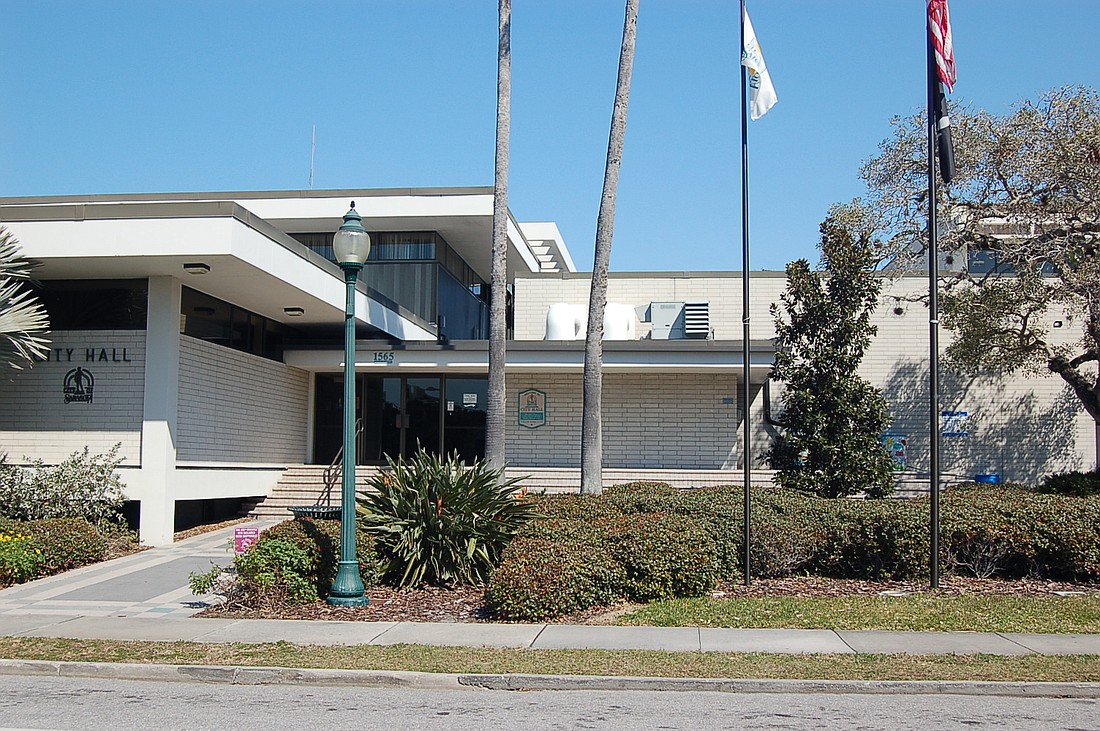- July 26, 2024
-
-
Loading

Loading

As the city examines its zoning regulations, both officials and residents have asked: Does the city have the legal authority to require larger building setbacks in areas where landowners currently have the right to construct to their property line?
And, if the city can mandate the bigger setbacks, can they then translate that extra space into the creation of wider sidewalks?
The answer, according to City Attorney Robert Fournier? It depends.
At Monday’s City Commission meeting, Fournier gave a legal overview of the city’s ability to regulate setbacks. The presentation was a response to an ongoing push from residents to establish bigger setbacks along pedestrian corridors in the downtown area, a change those residents hoped would lead to wider sidewalks along that corridor.
Generally speaking, Fournier said, the city does have the ability to change its setback regulations in any zoning district. Officials have questioned whether adjustments to those regulations could be construed as a restriction on private property rights under Florida’s Bert J. Harris Jr. Private Property Rights Protection Act.
There are certain cases where private property owners could argue larger setback mandates are a violation of the Harris Act, Fournier said. But he believes that would mostly apply to situations in which a property owner had made strides toward developing the property in question — and where the new setback requirements would reduce the expected value of their investment into the property.
In those cases, the city would be required to compensate the property owner for the value lost as a result of the new regulations.
Fournier said the city would need to evaluate the effects of the regulations on a case-by-case basis. More often than not, though, he thinks property owners wouldn’t have the right to seek compensation.
“Will Harris Act claims ensue?” Fournier said. “There might be some, but I think in many instances, people won’t have a viable claim because they won’t be proceeding with plans for development. You do have to look at each parcel.”
Although Fournier believes the city could adjust its setback regulations, that doesn’t necessarily mean it could then use that private land to widen its sidewalks.
Again, Fournier said the issue had to be looked at on a case by case basis. But in most cases, he believes the city wouldn’t have the ability to force a private property owner to give up land for a public use.
Fournier said there needs to be a reasonable connection between a legitimate governmental purpose and the impacts of an individual development for the city to mandate the dedication of private property as public right of way.
In some cases, he said, a development might cause an increase in the pedestrian activity along the sidewalk. The city could use that as grounds for using a segment of that property to improve a substandard sidewalk, but Fournier said that scenario wouldn’t apply to many projects.
“I don’t think I would giving you correct advice if I told you you could do that across the board,” Fournier said.
The resident activist group STOP has pushed for bigger setback requirements as a path to wider sidewalks. At Monday’s meeting, STOP steering committee member Kate Lowman asked the commission to direct staff to provide a list of several options for dealing with sidewalk and setback issues throughout the city.
Hoping for expediency, Lowman asked the commission to revisit the conversation within a month. And STOP suggested focusing on areas that have had a higher volume of complaints related to those issues: south Palm Avenue, Tamiami Trail, Fruitville Road and the Rosemary District.
The commission agreed, hoping to tie the ongoing discussion into the production of a new citywide form-based zoning code. The board asked staff to produce a report within 30 days of the publication of the proposed code, which is scheduled to occur by March 9.
Although the city agreed to take swift action as it pursues improved regulations, staff cautioned that reshaping the city’s sidewalks would be a long-term endeavor.
“It’s not going to happen overnight,” Deputy City Manager Marlon Brown said. “It’s going to take a while for these streets to get to where we need to be.”